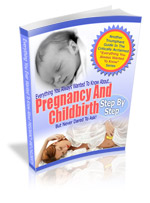Welcome to Pregnancy Guide
Abortion Price Article
 . For a permanent link to this article, or to bookmark it for further reading, click here.
. For a permanent link to this article, or to bookmark it for further reading, click here.
You may also listen to this article by using the following controls.
History of Abortion - What Is the History of Abortion?
from:Abortion is not a new concept. In fact, abortion has been around for hundreds of years. The history of abortion begins with the ancient Greeks and Romans, and, of course, continues even today. Early abortions were performed in rather frightening and unscientific ways. These ways primarily dealt with herbs – dubbed “abortifacient” – sharp objects, and even by placing severe pressure on the expectant mother’s abdomen.
Abortifacient herbs were used for hundreds of years, and some people still use them today, although this is not recommended because of the possibility of physical danger to the woman. These herbs were also not guaranteed to work, and sometimes the user would get ill, but the herbs would fail to cause an abortion. In the 11th century, a missal on herbal remedies was written, and in it were listed the herbs that can cause abortion; thus the beginning of abortifacient herbs in the history of abortion. Herbs listed in this book were black and white hellbore, pennyroyal, Italian catnip, sage, savory, cyperus, and soapwort. Of these, recently there are two cases of death caused by pennyroyal. Other herbs such as birthwort, rue, tansy, opium, worm fern, and silphium (which is now extinct) were also used. Some people even used iron sulphate and iron chloride. Some of the most interesting remedies used herbs that modern people use everyday, sometimes even in food: egg, dill, marjoram, thyme, parsley, lavender and juniper.
The history of abortion continues with the development of current methods of abortion. The curette, which is a sharp implement used to clean the walls of the uterus, was initially invented in France in the 18th century. The process of dilation and curettage has been used since the 19th century. Vacuum-type implements were developed in the 19th century, but were only used in Japan, China, and the former Soviet Union until the mid-20th century when the process was introduced in the United States and Britain. In the late 20th century, drugs like mifepristone were developed to chemically produce an abortion.
The legal history of abortion is somewhat complicated. Abortion laws established by the church in early times concentrated on the point in the pregnancy called the “quickening”; this term commonly referred to the time when the expectant mother can feel the baby move for the first time. After the quickening, abortion was considered taboo, and was considered illegal. Between the 18th and 19th centuries, clergymen, doctors, and others interested in social reforms began to make movements to ban abortion altogether. The 20th century brought the legalization of abortion in most Western countries, but this was, and still is, the subject of great debate and controversy. In the United States, abortion during the first trimester (or the first 12 weeks) of pregnancy was deemed legal by the Supreme Court in 1973 in the famous court case Roe vs. Wade, beginning a new phase in the history of abortion.

